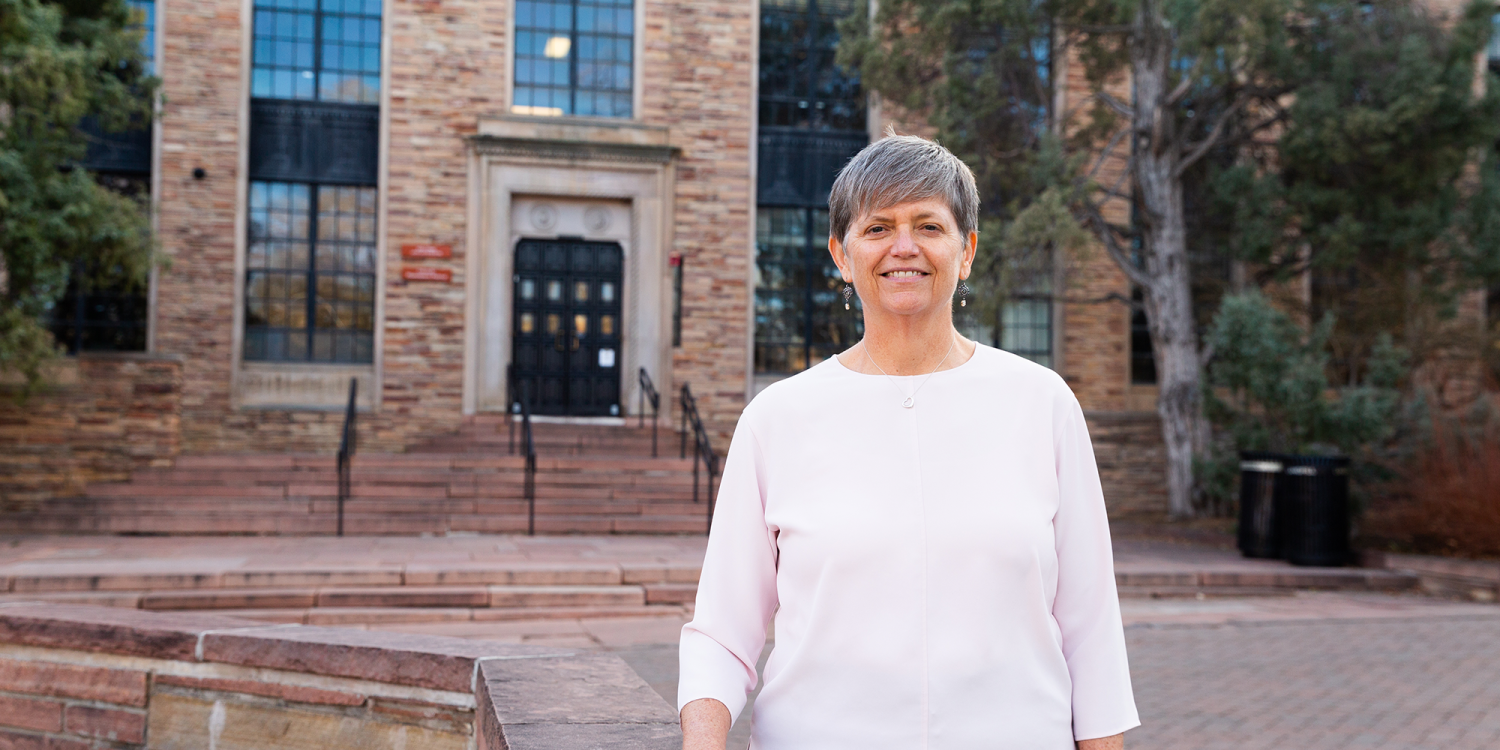
A Conversation with CU Boulder’s Campus Architect

Last October, d’Andre Willis began her role as CU Boulder’s campus architect and director of planning. She is the first woman to hold the position. Here she discusses her favorite buildings, sustainable design and why she chose to work at CU Boulder.
What inspired you to become an architect?
I have always had a deep response to buildings — both as objects and as habitable spaces. I remember trips to Chicago as a kid and being wowed by individual buildings that looked cool to me and intrigued by the way the buildings conversed with each other in the city. At that age, I drew a lot of plans for dream homes; most of them had streams running through them and trees growing inside.
Why did you want to work for CU Boulder?
I am passionate about the link between the physical environment and the culture of a place. The focus of my career has been on creating public spaces that have an impact on making communities better, and it’s an honor to be asked to steward a physical campus of CU Boulder's quality in support of the academic mission, culture and people of the university.
What is your favorite building on campus?
Often an architect’s favorite building is their current project, and by that measure I am most passionate about the Hellems Arts and Sciences Building. Hellems is so important to campus — it’s a key part of our historic Norlin Quad, a center for teaching where nearly all undergrads take at least one class and the first building on campus designed by Charles Klauder in the Tuscan Vernacular style. Unfortunately, within the wonderful exterior of Hellems, the classrooms and other spaces for faculty and students aren’t up to the quality that the university needs. Currently we’re in the early design phases of a project that will renew all of Hellems to create a dynamic and welcoming hub for learning while taking care of the historic fabric for the next 100 years of this important building’s life.
What’s your favorite building in the world?
I’d like to take that question in a different direction and tell you about one of my favorite places in the world. I love buildings in their context, particularly cities and campuses, where structures, landscape and public art shape outdoor spaces that are joyful and energetic. Dearborn Street through Chicago’ Loop, for instance, is a place where buildings and sculptures create a string of amazing public spaces.You can start near the south end with wonderful historic structures like the Monadnock Building; then traverse Federal Plaza, which is ringed by Miesvan der Rohe’s Federal Towers, his luminous post office and the historic Marquette Building by Holabird and Roche with its ornate lobby and Calder’s exuberant flamingo sculpture anchoring the center. Continue north to the Chase Bank Plaza with Chagall’s Four Seasons mosaics. Last and not least is Daley Plaza, where the stately columns of the city and county building and the groundbreaking Daley Center tower designed by C.F. Murphy in CORTEN steel shape a plaza enlivened with sculptures by Picasso and Miro.
How does sustainability factor into everyday thoughts about design, especially here in Boulder?
The negative impacts that buildings have made to climate change, habitat loss and other ecological damage is clear: We can do better and we must. CU has been a leader in sustainable design, and I look forward to continuing to push the bar higher on our new construction and renovation projects. Sustainable design works best when it is an integrated effort working simultaneously on many different fronts. These efforts include stewarding our existing buildings so that they can continue to serve the university for years to come, creating buildings that are resilient to natural and human-caused events,decarbonizing through changing fuel sources and reducing energy usage in both new and existing buildings. Also, buildings need to contribute positively to the health and wellness of the people who use them, such as by connecting to the amazing natural environment all around us here in Boulder.
How do you strike a balance between traditional design styles and innovation?
I’m new to campus, but from my first moments here, I’ve been impressed by the reverence in which the Klauder buildings in the historic core are held.These buildings are treasures, and CU is known across the country for their standard of beauty. I’m also excited by the opportunities in East Campus, north of Boulder Creek and Williams Village to explore aesthetic expressions that expand the campus identity and create a sense of neighborhood and community.
What is most different now for someone entering the architecture field today than in the past?
One of the major differences is the understanding that the profession needs to expand to include diverse voices and people from diverse backgrounds. Change is slow, but steady. I’ve seen significant change in the span of my career in the number of women in leadership positions in the profession, and am honored to be the first woman to serve as CU Boulder's campus architect. I am encouraged by the serious efforts underway to create lasting gains for LGBTQ people, and Black, Latinx, Indigenous and other people of color in the profession.
What do you like to do for fun?
My favorite outdoor activities are nature walks, biking and rowing; sculling in single person boats has been a favorite activity enjoyed by my husband and me for many years. I also enjoy playing music, particularly in ensembles with other people. My pandemic creative outlets have been learning to play keyboard and doing weekly watercolor sessions with my two sisters via Zoom.
Anything else we should know about you?
I start my day with the KenKen puzzle in the Daily Camera.
Interview condensed and edited.
Photo by Matt Tyrie

